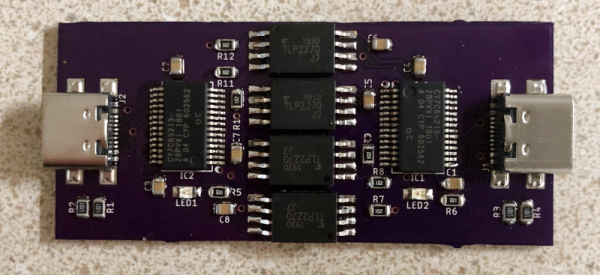The classic serial null-modem cable was, among other things, used to connect two computers together for communications and file transfer. Largely eliminated in daily use by the advent of home networking, there are still fringe applications where such a thing can come in handy. [Nick Sayer] needed just such a tool, but one that would work in a modern USB environment. Enter the isolated USB null-modem.
The device consists of two USB Communication Device Class, or CDC chips, creating a USB serial port for each attached computer. The TX and RX lines are cross-connected to allow communication between the two sides. Rather than directly connect the lines, however, they pass through an opto-isolator. This is important, as it allows two computers at different ground potentials to be safely connected to each other without damage.
[Nick] originally created the device to solve a specific problem at his day job, but community response was large enough that he was kind enough to share the project online. Expect to see devices available on Tindie in future for those that need a hookup. While it’s not something everyone will need, for those that do, it should come in handy. If you’re looking for other useful applications for USB-serial devices, there’s plenty – you can even try your hand at software-defined radio!













